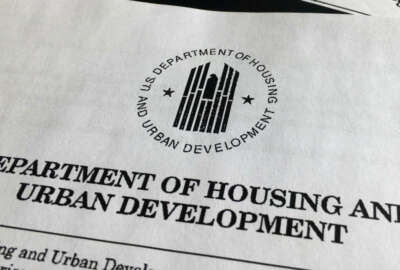Hubbard Radio Washington DC, LLC. All rights reserved. This website is not intended for users located within the European Economic Area.
How HUD could get a better handle on funds that help pay for low-income housing
Housing and Urban Development (HUD) does not build low-income housing, but it helps finance it. The Government Accountability Office (GAO) found that HUD offici...
Housing and Urban Development (HUD) does not build low-income housing, but it helps finance it. Since 2016, HUD’s Housing Trust Fund has made grants to 263 projects for people with extremely low incomes. The Government Accountability Office (GAO) found that HUD officials need to do a better job of monitoring and overseeing the use of Housing Trust Fund dollars. For details, Federal Drive with Tom Temin spoke with GAO’s Director of the Financial Markets and Community Investment Team, Jill Naamane.
Interview Transcript:
Tom Temin And glad that you have moved from an acting director to director. Well-deserved promotion there sometime since the last time we had you on. And tell us about this program. It looks like HUD takes a very small portion of the financing of these projects that are, again, serving very low income people. What’s the purpose here? What are they trying to do here in the first place?
Jill Naamane Right. That’s right. Tom. So the Housing Trust fund is really a dedicated funding source to help assist the development of rental housing, particularly for those very lowest income households. It is a small percentage of new loans that Fannie Mae and Freddie Mac purchase that go into this fund. The Housing and Urban Development Department allocates this money to states and states, then award grants to developers to build these projects. And it’s really needed because these housing projects, rental housing projects can be very complex and very expensive, and developers rely on future income to help cover their mortgage payments to provide some profit. And when the tenants in the projects are lower income, the amount of income from that rent doesn’t really cover their costs. So some additional subsidy and assistance is really needed to make developing these projects more financially feasible.
Tom Temin So it’s safe to say these are not luxury housing, with swimming pools on the roof and palm trees in the lobby, but something that somebody can make money off of with low rents and little subsidies maybe from the state funds in general.
Jill Naamane Sure. Other sources of funding are private funding, other federal programs, state and local funding loans. But really the units are. We have some pictures in our report. The projects include units that are some that are designated for housing trust fund units and some that are not. So they are pretty indistinguishable. The units that are designated from the housing trust fund from others.
Tom Temin Got it. Well, the point is you found that HUD needs to do a better job of overseeing how the money is used, because HUD money, like all federal and state money, comes with strings attached, things you have to do to comply. And so what are some of the areas that HUD needs to look at better to make sure the money is being spent wisely and according to the rules?
Jill Naamane That’s right. We did find some weaknesses where HUD could improve their oversight. Funding has been going through this program since 2016, but HUD has not started in depth field monitoring at all of this program yet. So we found some areas where they planned to do it and start doing it next year. But we found some areas where they could do some things now in a more centralized way to improve their oversight. There were a few places where there were certain requirements that HUD is not looking at all yet, and some additional instruction to grantees could be helpful. In addition, we also found some areas where HUD could improve their reporting so that the information in their reports is not misinterpreted.
Tom Temin Right. There are certain pieces of information that the grantees are supposed to enter directly into HUD’s own systems, and that doesn’t always happen.
Jill Naamane That’s right. There are some information in their systems that completed a number of unit for the program actually is one of the one of the pieces of information that we saw. And the information is pre-populated with just the housing trust fund unit. And grantees are supposed to update that information with the total number of units. As I mentioned, projects can include both housing trust fund units and not housing trust fund units.
Tom Temin We’re speaking with Jill Naamane. She’s director of the Financial Markets and Community Investment Team at the Government Accountability Office. And HUD generally agreed with the recommendations that you made.
Jill Naamane Yes, that’s right. They did. They agreed with all five recommendations that we made and have actually started taking some steps to implement some of them. So we were pretty pleased with that.
Tom Temin And your methodology was to look at a sample of these projects. Give us a sense of how big the sample was and how many dollars were involved.
Jill Naamane Sure. We looked at a sample of 12 states and 70 projects really dug into the cost development information and written agreements and all of the documentation for all of those projects. We also looked at some of the data that was available from HUD for all the projects that have been completed with housing trust fund money.
Tom Temin All right. And I just want to ask you about you have a pie chart showing where these projects got their funding on average. And the fund we’re talking about, the housing trust fund was 9.6% of it. 40% was low income housing tax credit. So that’s, I guess, ultimately Treasury money also and then 26.5% is private. 19% state and local. So essentially, private entities put up a quarter roughly of the money to build these things. This is beyond the maybe the scope of the report, but what does that say about the market for this type of housing? Without a lot of federal and state subsidy, it probably wouldn’t get built at all. Fair to say.
Jill Naamane I think that is fair to say. Each of these projects really do require a very complex web of funding sources from many different places. And we found that the projects that were assisted by housing trust fund money, the housing trust fund portion of the project’s costs was about 10%. So it really does take a lot more money from a variety of sources to get these projects completed.
Tom Temin Yeah, so 10% covers about the floorspace of the bathroom and the rest of it comes from other sources and these apartments and this trust fund, does HUD get back? I mean, that implies that maybe a portion of the proceeds come back to HUD to keep the fund replenished? Or is it simply a pay as you go fund that’s appropriated?
Jill Naamane It’s a pay as you go. It’s annually allocated from the business of the Fannie Mae and Freddie Mac and the loans that they purchase. So the amount that goes into the fund every year and that’s allocated every year can really vary depending on the amount of business that they have. The highest amount, I think was in 2021. That was over $700 million. Last year it was around $350 million. So it can really fluctuate quite a bit.
Tom Temin And just a final question. The classic AA housing program that HUD has operated for decades, this is a separate program, correct, for very low income people.
Jill Naamane That’s correct. That is a separate program. The Housing Trust fund program is a separate allocation that goes right to the states. And the states really determine what priorities they want to use the money for that best fits the needs in their states, that they want to focus on new construction. If they want to focus on rehabilitating existing structures, if they want to focus on providing housing for homeless or previously incarcerated people, they can set their priorities.
Copyright © 2024 Federal News Network. All rights reserved. This website is not intended for users located within the European Economic Area.
Tom Temin
Tom Temin is host of the Federal Drive and has been providing insight on federal technology and management issues for more than 30 years.
Follow @tteminWFED





